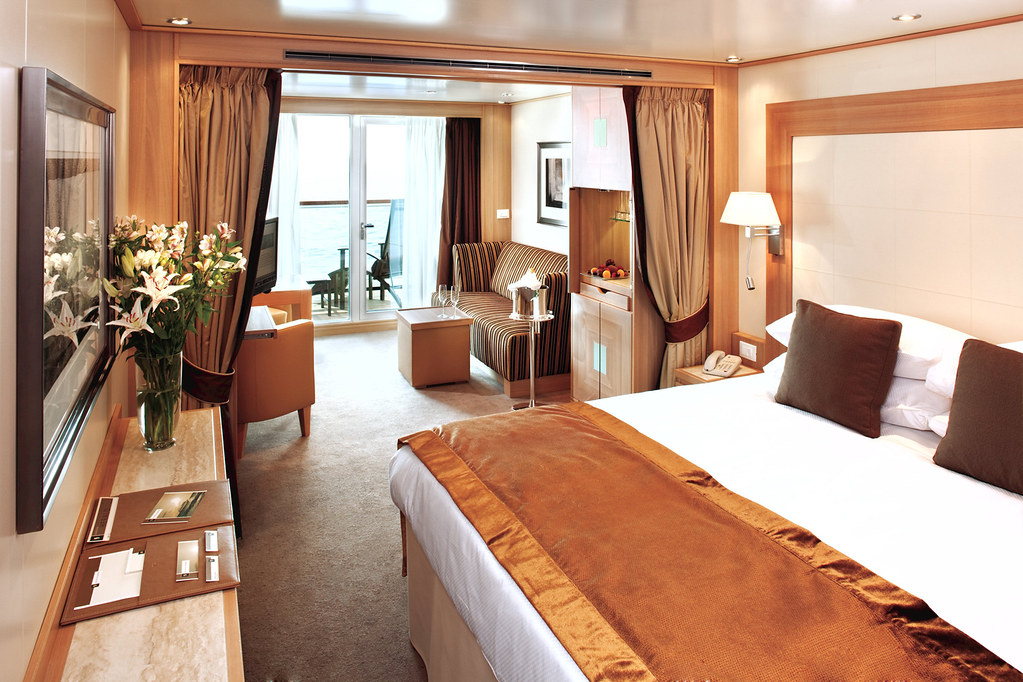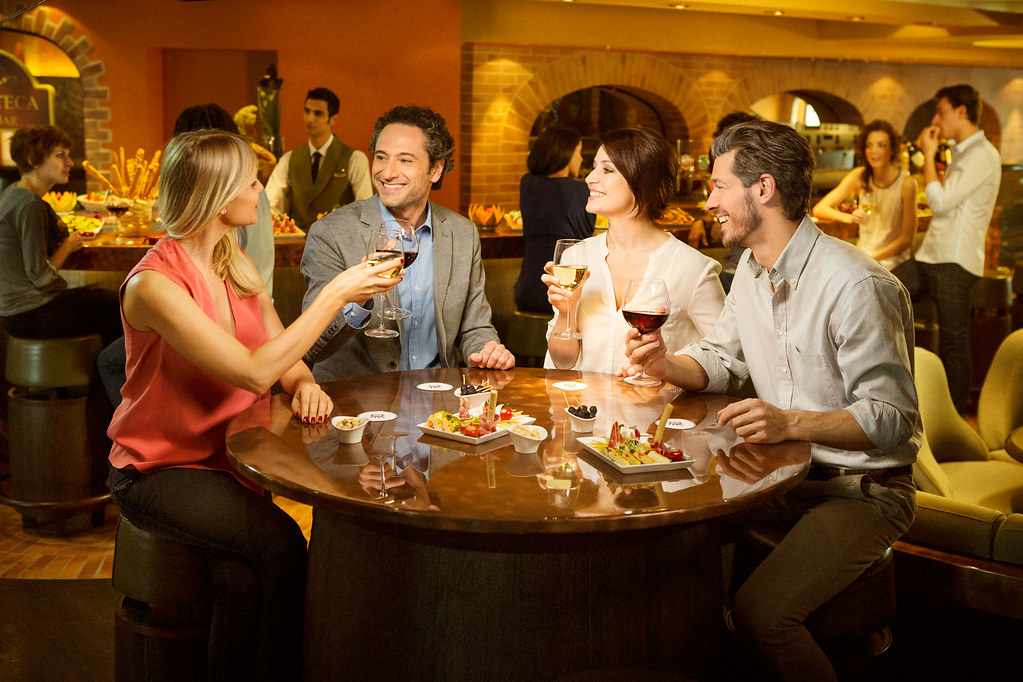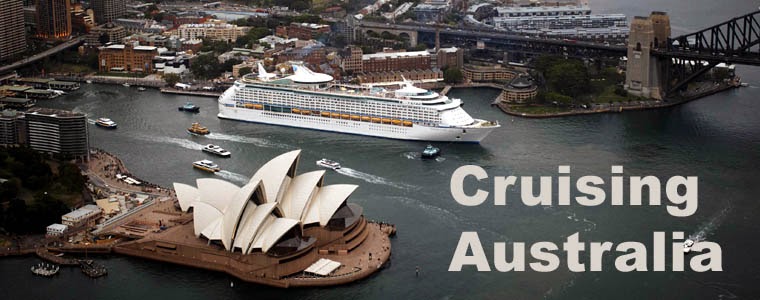There's a tired old saying that goes “cruising is for newlyweds, the overfed and nearly dead.” Well, you can bury that old chestnut because Australians of all ages; married, single, retired and families are doing it and doing it in ever-increasing numbers. In fact, in 2014 more than one million Australians took a cruise holiday, making us the world's biggest cruisers by population.
But what is it about cruising that attracts so many people, Australians in particular. Could it be our isolation, our free spirit or simply our love of travel, leisure and adventure?
Whatever the reason, now is the best time to start planning for your next, or your first cruise holiday. There are more ships, more places to go, keener prices and more to do aboard and ashore than ever before.
The big selling point for travel agents is that you are not packing and unpacking every day as you get on and off a bus. Checking in and out of hotels, airport security and haggling with taxis can make you feel like you just can't wait to get home. Cruising is relaxing, enjoyable and stimulating and you can do as much or as little as you like.
Onboard entertainment has come leaps and bounds from the days of deck quoits and shuffleboard. Think Broadway shows, headline musical acts and theme park style fun. Lecturers and presenters provide enriching talks and there are even cooking classes and comprehensive spa and wellness facilities.
Taking the Plunge
Talking to cruise veterans and expert agents alike, there are some pieces of advice that just keep coming up time and again.
Research your destinations, your ships and your cruise preferences. Think about things like: how long do you want to cruise? Where do you want to go? Do you care? Who will you be cruising with and how much do you want to spend?
Use a specialist CLIA agent. These experienced agents know cruise inside and out. You'll be sure to get the best deals on the best ships to suit your personal cruising style and budget. Mistakes can be expensive and leave you feeling disappointed, and you don't want that.
When speaking to your cruise specialist you can ask all about the nitty-gritty like the differences in ships and their cabin styles, onboard credits, excursions and dining options. While there may not be such a thing as a silly question, here are some tips to get you up and running.
 |
| Get cruising now. Click for free brochures. |
Who Cruises?
While most cruises leave from the eastern seaboard, there are many that you can catch from Fremantle and sail off to somewhere else like to the east, Bali, Singapore or further still.
In 2016, with 94 cruises aboard 15 different ships, Fremantle sees more cruise visits and choice than ever before. Cunard, P&O and Princess are regulars, while Royal Caribbean and Celebrity will also make a couple of calls.
Cruise itineraries can be long or short ranging from a single night 'sampler' cruise to a round-the-world cruise of several months. These longer voyages are popular with retirees or 'empty-nesters'.
Cruise ships come in all shapes and sizes, so there is definitely a ship out there just right for you. To make it easier to tell them apart, the cruise lines have agreed on ship categories that define the style of the cruise and those passengers best suited to it. Here's a guide.
- Contemporary Cruises ($ - $$): These popular feature-rich cruise lines are great for first-time cruisers and travellers wanting plenty of things to do at a great value price. You'll find P&O the most prominent in this class, with Carnival and Royal Caribbean making waves too.
- Premium Cruises ($$ - $$$): These upscale cruise lines also offer many amenities, with a focus on more refined service and space. You can find Holland America, Princess and Celebrity at the front of this class.
- Deluxe Cruises ($$$ - $$$$): These deluxe lines combine the service and facilities of a premium line with the intimacy of a smaller luxury line. Cruise lines like Oceania and Azamara are leaders in this category.
- Luxury Cruises ($$$$ - $$$$$): These luxury cruise lines are aimed at the discerning cruise traveller. Expect highly personalised service and exotic itineraries, as well as a sumptuous experience both onboard and with shore excursions. You can find Crystal, Regent Seven Seas, Silversea and Seabourn in this elite league.
- Specialty Cruises ($$ - $$$$): These are lines offering a specialised and free-form cruise environment often featuring a specific destination or sailing style. Cunard and Windstar are examples.
- Adventure and Expedition ($$$-$$$$$): Once a tiny niche, this style is becoming more mainstream as word spreads. Think Antarctica, Arctic or remote islands like PNG and parts of Indonesia. West Australians have their own award-winning luxury expedition cruise ship, True North, who specialise in the Kimberley, but APT, Ponant and Coral Expeditions are in the game too.
Which cabin?
 |
| Seabourn Verandah Suite. Very fancy. |
Potentially one of the most confusing aspects of choosing your cruise and another good reason to consult an expert agent. But for starters, there are four basic types:
- Inside: the smallest cabin, with no window to the outside. Usually the cheapest and last ones to sell.
- Outside: one with a window or porthole with an outside view. Usually about the same size as an inside cabin or larger. Can sometimes be called 'oceanview'. Good value if you don't intend to spend too much time in your cabin.
- Balcony: a cabin with a private veranda where you can go outside when you don't want to go to a public deck. Very popular on the big modern ships which are built with lots.
- Suite: a bigger, fancier cabin, featuring defined living and sleeping areas and a variety of extra goodies and perks
There are plenty of variations on those basic types above including expansive royally-named suites for the high-rollers, minisuites, duplexes and split-level, 'loft' style or interconnecting ones that can be great for a whole family or friends travelling together. Watch out for terms like 'Promenade' where your cabin faces the public walkway around the ship or 'obstructed view' meaning instead of ocean, you might see the back end of a lifeboat.
The next step is to choose your deck or level; forward, amidships or aft. There can be reasons for choosing any one of these. You may want to be near the pool, spa, restaurants or entertainment. If you're worried about queasy tummies, lower amidships is often better. If noise is a concern, there's a bit of science involved. For example, cabins near pools and entertainment areas can get rowdy, while lower aft is near the engines.
Solo travellers will have their own set of tick boxes. Does the cruise line charge for sole use of a cabin if you don't want the standard 'twin share' package? Most do. Some cruise lines have dedicated solo cabins, but these are still uncommon, usually small and often less than ideally located.
Tipping and gratuities are one of the points most discussed in the cruise forums and frequently a topic of complaint or misunderstanding. The US meaning is more like a 'service charge' than an actual tip that you give for extra or outstanding service. The big American brands have modified their tipping policies for cruising in Australian waters, some removing it altogether. Australians still like to tip, we just don't like being told we have to or have it automatically added to our account. If cruising overseas somewhere like the Mediterranean or North America, you may need to just adjust your thinking to cope with this extra charge.
When aboard
 |
| Dining aboard MSC |
The dining experience has always been a part of any cruise, especially on the luxury lines. The cruise lines are slowly moving away from the standard practice of everyone eating in one massive venue and moving toward providing a variety of smaller, more specialised outlets. Some of these will require advanced booking and others may attract a surcharge or both. Choosing a ship or cruise line for its dining is becoming more common.
RELATED: What is 'Specialty Dining'?
Frequent cruisers
Most cruise lines have their own equivalent of a frequent flyer scheme, based most often on days spent at sea. Again, these can be a cause for confusion, especially when cruise lines change the rules, which they have been known to do. So, if you are the type of person who likes to stick with a favourite product, choose carefully and then accrue your benefits which can be cabin upgrades, exclusive cocktail events, special dining access or priority boarding.
When you think you've ticked all the boxes, there is still more advice and one of the best pieces is to actually go on holiday. Make sure you pack a vacation attitude. Don't bring your worries or any rigid ways with you on a cruise. Part of the attraction of cruising is the truly carefree atmosphere aboard ship and a good crew will do their utmost to ensure you relax and unwind, and if nothing else, isn't that what the perfect holiday should be.



No comments:
Post a Comment